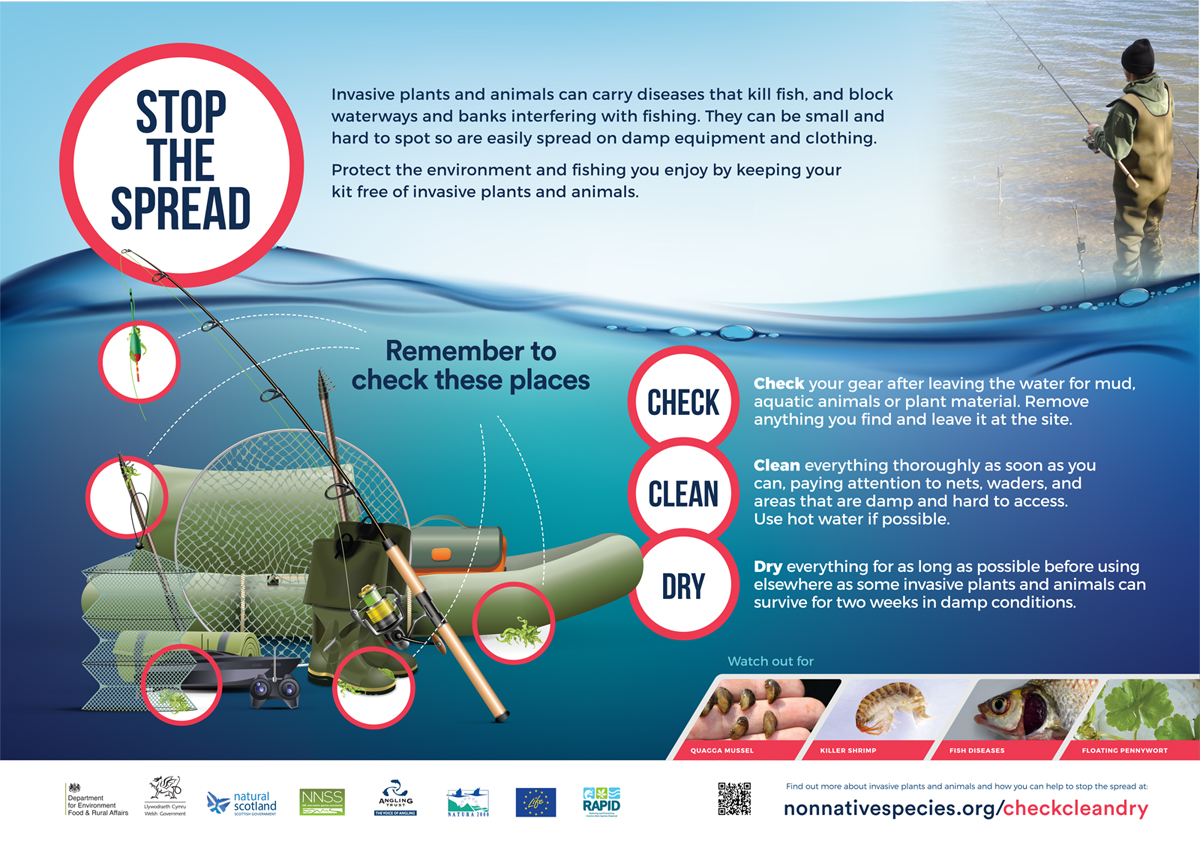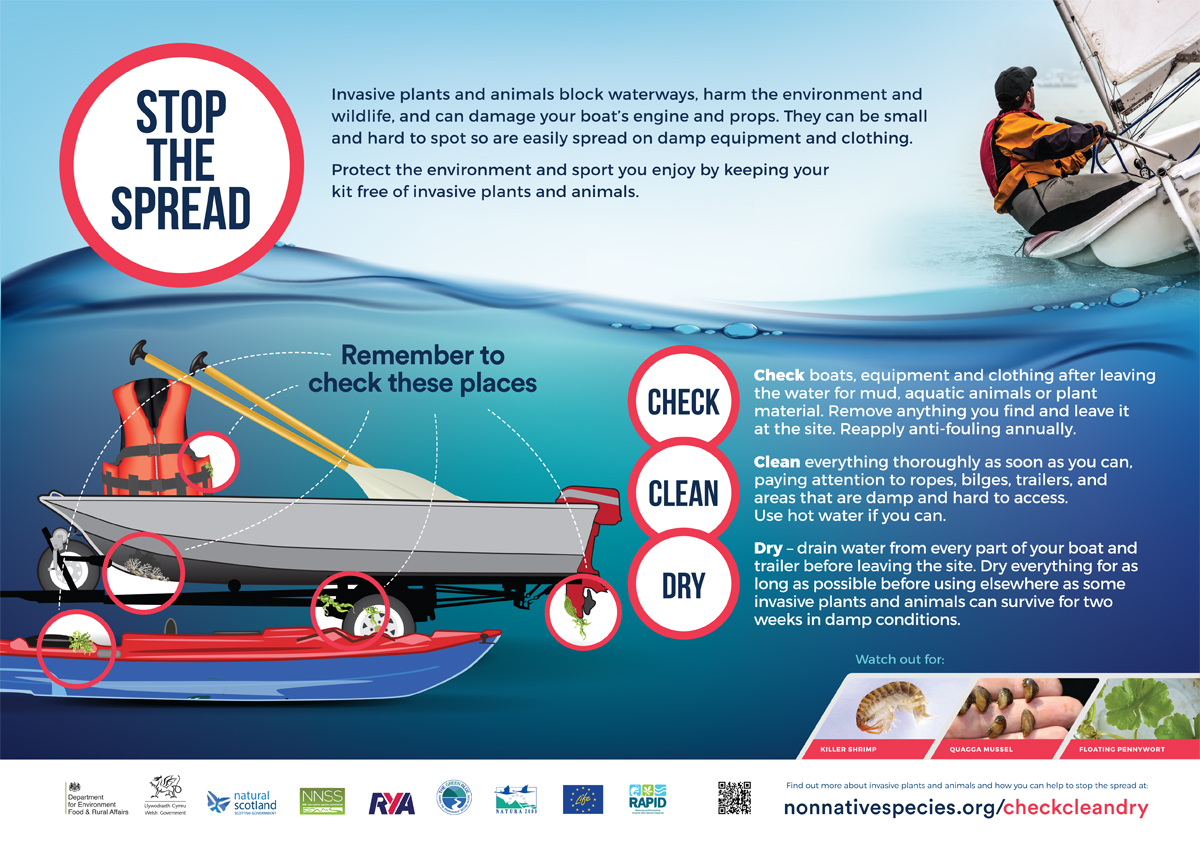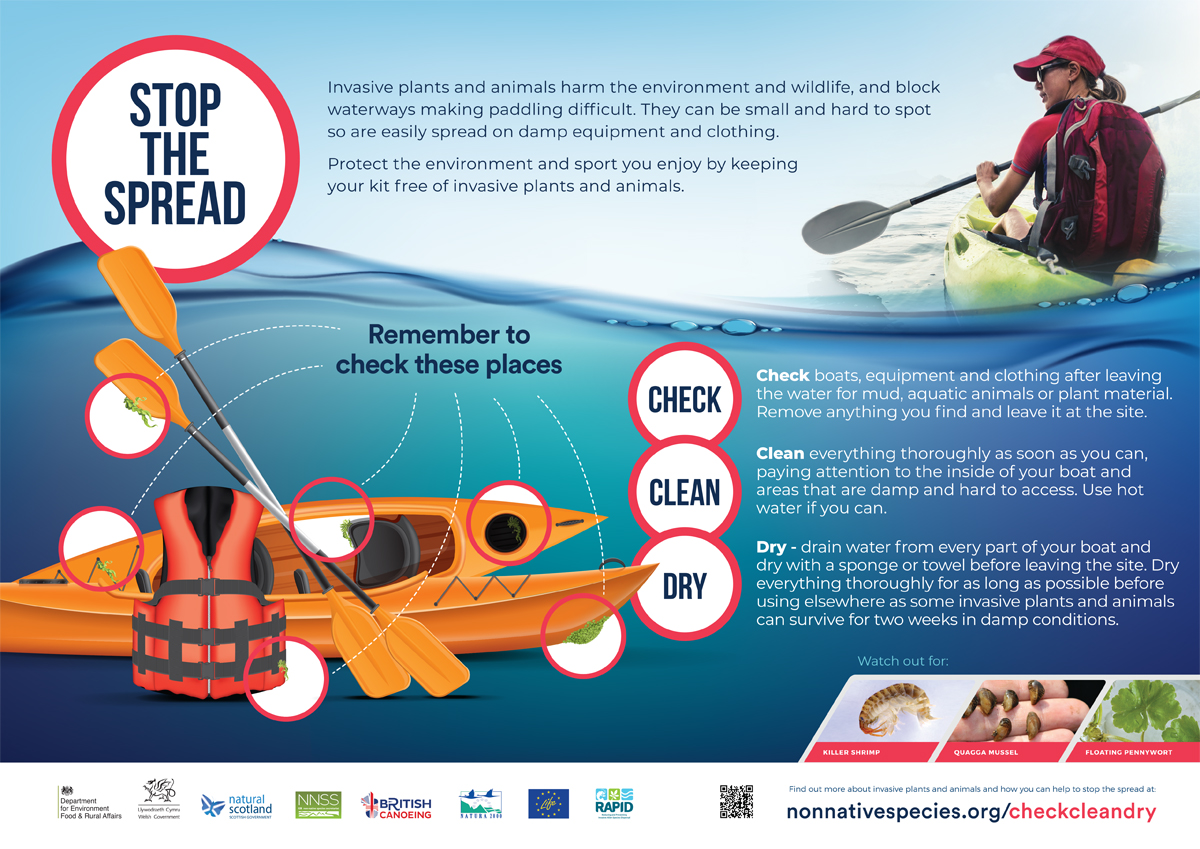Biosecurity Policy
BIOSECURITY STRATEGY FOR HENLEAZE LAKE AND ITS GROUNDS
Introduction
Biosecurity is the prevention of the introduction and spread of harmful pests, diseases and invasive non-native species. These organisms can spread naturally through the wind, water and animal migration. Human activity, however, such as moving contaminated fishing equipment or boats, or wearing contaminated boots, can have a big impact on their spread. In the water environment, there are a number of invasive species that are known to be very damaging to the water environment and its ecosystems. Animals include the “killer” shrimp and Signal crayfish, and plants include floating pennywort and water primrose. We are also aware of the parasite that was present among our carp, as a result of injudicious and unregulated stocking of fish in the past.
Biosecurity is listed on the risk register for the club, mainly in relation to water quality, although biosecurity of the grounds is also important. There are invasive species such as snow-on-the mountain on the limestone outcrops at the Northern end of the Lake, and we are aware of the Ash die-back which is spreading across the country and which we can expect to infect our ash trees.
Biosecurity of the Water
Biosecurity of the water will be ensured by following the principles of Check, Clean, Dry. These principles are part of a government-led initiative and are recognised as being key to stopping the spread of invasive non-native species. The principles apply to our own equipment, such as boats and water based items, and to any boats that might be used should kayakers be allowed to use the Lake for safety and rescue training purposes or recreational activities such as kayak polo. These principles are:
Check: Check your equipment and clothing for live organisms – particularly in areas that are damp or hard to inspect;
Clean: Clean and wash all equipment, footwear and clothing thoroughly.
Dry: Dry all equipment and clothing. Some species can live for many days in moist conditions.
As it is difficult to enforce Check, Clean, Dry on people coming to the Lake with Kayaking and other equipment, this means that the Club should ideally have its own set of equipment – if we propose to open up the lake to kayakers for safety and rescue training, we should ideally have our own boats that are used for this. Failing that, we need to provide washing facilities and ensure that boats are washed well away from the Lake.
When carrying out any stocking of the lake with either fish or plants, it is important that we check the biosecurity of the plants and animals used, as small fragments of plants may be introduced alongside those planted, and it is important that we do not introduce any further parasites of fish.
The bringing or removal of frogs, toads, newts, tadpoles and frogspawn will be prohibited.
Biosecurity of the Grounds
We need to remain vigilant against plants such as Himalayan Balsam and Japanese Knotweed, which can regrow from a fragment as small as 0.7g and which quickly outcompete the natural vegetation.
We will also take firm action against neighbours tipping garden and other waste into the Lake or grounds.
We will remove invasive non-natives such as snow-on-the-mountain and cotoneaster from the limestone outcrops around the Lake.
Monitoring
As part of our biosecurity accreditation, traps have been laid for Signal crayfish, and the Lake was fortunately found to be free of these animals. Part of the role of grounds manager, Jodi Peachum, will be to monitor the grounds and the Lake itself for invasive non-native species, pests and diseases, so that appropriate action can be taken.
Sunscreen and sun lotions
Sunscreen/lotions have always been an issue at the Lake during periods of hot weather when we get many visitors and, can result in unsightly oil films and scums around the Lake. This is one of the reasons why the Club deploys the aerator overnight to break up and disperse these oil films and scums.
There is now growing evidence that the chemicals in some sunscreens/lotions can damage aquatic ecosystems, as they accumulate there.
For these reasons the Club asks members and guests to:
1) Minimize your use of sunscreens/lotions at the Lake
2) Only use recommended eco-friendly sunscreens/lotions at the Lake – those with very long lists of chemical contents are probably not eco-friendly
Please see the link below for recommendations for eco-friendly sunscreens/lotion and those to avoid.
https://www.outdoorswimmingsociety.com/ocean-friendly-river-friendly-sunscreens/
Thanks for your co-operation on this.


